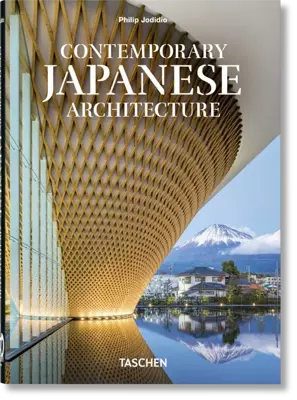Contemporary Japanese Architecture. 40th Ed.
- A survey of Japan’s contemporary architecture scene
Japan's contemporary architecture has long been among the most inventive in the world, recognized for sustainability and infinite creativity. No fewer than eight Japanese architects have won the Pritzker Prize.Since Osaka World Expo '70 highlighted contemporary forms, Japan has been a key player in global architecture. Tadao Ando's geometry put Japanese building on the map, bridging East and West.
After his concrete buildings, figures like Kengo Kuma, Shigeru Ban, and Kazuyo Sejima pioneered a more sustainable approach. Younger generations have taken new directions, in harmony with nature, traditional building, and an endless search for forms.Presenting the latest in Japanese building, this book links this unique creativity to Japan's high population density, modern economy, long history, and continual disasters in the form of earthquakes. Accepting ambiguity, constant change, and catastrophe is a key to understanding how Japanese architecture differs from that of Europe or America.Derived from the XL-sized book, this affordable edition highlights 39 architects and 55 exceptional projects by Japanese masters-from Tadao Ando's Shanghai Poly Theater, Shigeru Ban's concert hall La Seine Musical, SANAA's Grace Farms, Fumihiko Maki's 4 World Trade Center to Takashi Suo's much smaller sustainable dental clinic.
An elaborate essay traces the building scene from the Metabolists to today, showing how the interaction of past, present, and future has earned contemporary Japanese architecture worldwide recognition.
















